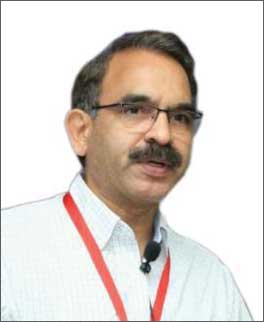This free and easy-to-follow pre-diabetes treatment is a great first step for anyone looking for free treatment. This diet plan is easy to follow and can help you transition from diabetic to pre-diabetic status and live an almost diabetic-free life.
Dr. Dixit helped many people figure out and understand the core concepts of diet, hunger, and when to take food with a proper schedule for patients and serve them Pre-Diabetes Treatment. However, the manner in which he persuaded people of his message for diabetic patients was logical, acceptable, and gave treatment free of charge. In one of his classroom sessions, he explained this. Many of us are cautious about losing weight and often walk miles on unsuccessful paths, which also waste thousands of rupees. However, we do not achieve the desired outcome. In this article, I will discuss the message delivered by his guru and respected senior physician, the late Dr. Shrikant Jichkar.
Who is Dr. Shrikant Jichkar? and mastermind of pre-diabetes treatment.

The campaign's guru, the late Dr. Shrikant Jichkar, was a remarkable mind. He was a physician, administrator, social reformer, and politician. He has the honor of being listed in the Limca Book of World Records for receiving the most postgraduate degrees from different Indian colleges. To become an IPS and eventually an IAS, he successfully passed the Indian civil services test. At a relatively young age, he was elected to the Maharashtra legislative assembly and, unusually, was sworn in as a minister before that. He ruled all spheres of social life as an effective task manager and orator with exceptional brilliance.

About Dr. Jagannath V. Dixit and his service for Pre-Diabetes Treatment
After seeing amazing benefits from adopting this lifestyle change, Dr. Jagannath Dixit, a committed and dedicated medical educator with more than 28 years of experience teaching in medical institutions, started this campaign. He is an expert in medicine, social activism, and athletics. He has made a significant contribution to changing the lives of thousands of people. An excellent orator, he is dedicated to the underprivileged and needy members of society. He has successfully continued the job started by the late Dr. Jichkar. Dr. Dixit is a professor and the department's head of community medicine at the Government Medical College in Latur, Maharashtra.
Bad lifestyle and how it is affecting lives of million.
Anytime we eat, sleep and walk is in fact very harmful and it leads to hormonal imbalance. If we do not change in time, it will land you in the most difficult situation of your life. Some of the lifestyle modifications suggested by Dr. J.V. Dixit for diabetic and pre-diabetic patients are listed below. It will help, and it is very easy to follow in day-to-day life.
Free diet plan for Pre-Diabetes Treatment
- Eat twice when you are really hungry.
- In between two meals, do not take any food item that causes insulin secretion.
- Reduce carbohydrates and increase the consumption of proteins in your daily diet.
- Stop eating: sugar, sweets, jaggery and refined sugar usage in cookies, bakery products, and chocolates,etc.
- Walking daily for 4.5 km for almost 45 minutes minimum helps the most.
- The above diet plan is for people who is above 18 years old.
The majority of the time, we force ourselves to eat every half hour. We need something for chewing and drinking. However, 90% of the food items are bakery items, and all of them have refined sugar. Sugar is a food for harmful bacteria, and when we eat foods containing sugar substitutes, the medium becomes rich for bacteria to grow in your stomach. Finally, it weakens your immune system.
There is a body secretive fluid that called insulin, it helps breakdown the molecules and absorb vital nutritions from the food. If we take another food in between two meals, the fluid secretion will stop as the body sends signals to the brain that more food is coming. The insulin secretion only happens when stomach stop getting food in and insulin start producing when body is in working condition and not taking any food in the stomach for the next half an hour. When you start eating again, the secretion glands stop immediately. Thus, insufficient insulin is unable to breakdown the food's nutrients. You can take only water, and only a few food items are allowed during the two meals.
In Indian methodology and in yogic science, eating has given the first priority. It is said that, One who eats once a day is a Yogi (saint), One who easts twice a day is Bhogi (food lover), and one who eats thrice a day is Rogi (patient). In Mahabharat, it is also related to health, strength and disease respectively. The most of the deceases are arise from the wring eating patterns of the modern societies. Three plus meals and snacks every day causing less in production of insulin.
The study suggest after many research, intermittent energy restriction periods of as little as 16 hours. It we meet this target, one can improve health indicators and counteract disease process naturally. If you are looking for a life free of diabetic to pre-diabetic or free from diabetic. I recommend you to follow this diet pattern and see how your health is progress. If you have any suggestions, you are welcome to write comment below. Sharing is caring, do not forget to spread a word about this article.
Summary of Pre-Diabetes Treatment
The diet program is based on the yogic teachings and the natural systems that keep our bodies healthy. Based on actual events and documentation, the aforementioned article. Thanks to this free eating plan, many patients have been recuperating.



















